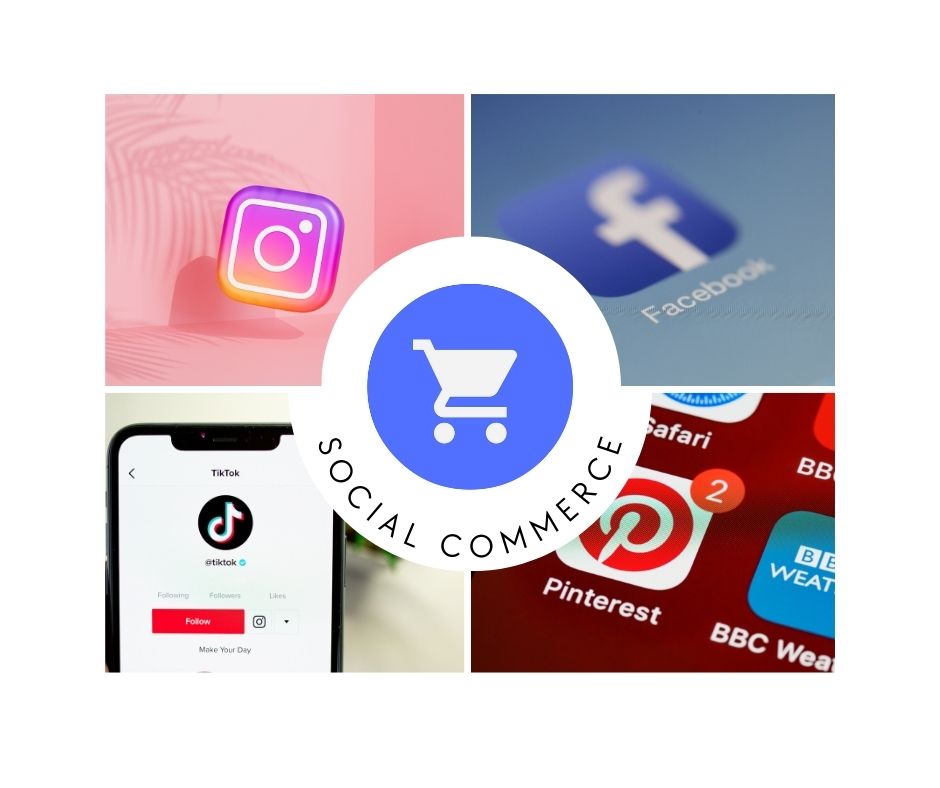This post was written by Jaycel Demonguitan.
As technology continues to develop and integrate with daily life, the world shifts its habits far differently from what you used to know it as. This condition is especially true with the newer generations, where tools like smartphones and mobile devices become essential to getting what you need. Thanks to these advancements, multiple trends in ecommerce have also emerged in the last few years.
While businesses have more advantages in the market thanks to new tools and strategies, many still haven’t mastered some approaches. Among these include social commerce, which will be the main focus of this article. But before delving deeper, what does social commerce mean?

What is Social Commerce?
Social commerce is a part of ecommerce that focuses on selling your products and services through social media platforms. Unlike other ecommerce platforms, your customers experience the whole purchasing and checkout process entirely inside their preferred app. Famous apps that have this feature include Instagram, Facebook, Tiktok, and Pinterest.

How does social commerce work?
Many social media apps today offer brands multiple tools built into the platform for your social commerce needs. These features make it possible to give your audience all the information they need about a product or service before growing interested in it. It can also help establish easier checkout processes and payment methods.

What are the benefits of social commerce?
Modern brands have every reason to try out social commerce strategies, especially if they want to keep up with their competitors. By adding this method to your business plan, you can leverage all of its perks. Here are a few examples of what you can expect from the power of social media.
● Boosted customer engagement
Social media platforms open up the opportunity to start a two-way conversation. While customers can reach out to you about their concerns anytime, you can also approach them and improve your engagement the same way. This capability enhances your authenticity and helps your customers make more informed decisions.
● Rank higher on search engines
Ecommerce is a never-ending competition since your website constantly needs to rank high on search engines to stay relevant. Luckily social commerce opens up an opportunity for you to boost traffic on your site while directing more sales. In effect, you can improve organic leads, which maximizes your overall ranking.
● Enhance customer insights
Most platforms you can use for social commerce come equipped with the tools and features needed to measure your analytics regularly. This way, you can easily evaluate and understand your customers better while simplifying the process for your team. You can also use these tools to adjust parts of your strategy that aren’t working.
● Increased average order value
Using social commerce helps you create a seamless shopping experience for your customers. From adding things to your cart to the direct checkout process, you can make everything easier, faster, and more convenient. Doing so can encourage more people to shop with your brand and build a reliable following over time.
Tips and Tricks to Maximize Your Social Commerce Strategies
Social commerce can be a great way to attract new customers and build your brand’s reputation. But because every business is different, you’ll need to find the right strategies that match your needs and allow you to reach your goals. Check out these tips and tricks to utilize your plan to its full potential.
● Put your customers first
Clients want to reach out to customer service reps through convenient platforms like Facebook and Twitter. And you may want to consider these platforms when building a loyal customer base. Having them can help you accommodate their demands and provide expert service in what they need.
● Know your platforms
Not all social media platforms will be ideal for your brand. Before you start building your strategies, take a moment to determine which one will work best for your products and services. For example, if you focus on visual content to appeal to audiences, then Instagram will be better than Facebook or Twitter.
● Partner with influencers
Every industry will have major influencers that can help bring your brand into the spotlight. When you engage with them, you can automatically tap into their audiences and reel them into potential customers. This way, you can build credibility in the market since people will be more willing to trust your brand.
● Present high-quality content
Content creation is a significant factor for any brand, regardless of what industry you belong to. Give your audience helpful and relevant information. It’s best to create something they can use to make more informed decisions with their purchases. You can also share other relevant content connected to your products and services that your target market can enjoy.
Get in touch with the right crowd
In the business world, quickly adjusting to new trends is one of the best ways to keep your brand relevant. With Millennials and Gen Zs becoming the majority of today’s audience, it’s essential to know the right ways to connect with them. E-commerce has boomed in recent years. However, other strategies like social commerce are also on the rise.
In a lot of ways, leveraging social media can grant you a lot of benefits. It makes your customer’s shopping experience easier, faster, and more convenient than other ecommerce platforms. And if you want the chance to connect with your audience on a deeper level, then this strategy will be your best bet.
Jaycel Demonguitan

Jaycel worked with Brad as his first Virtual Assistant since 2017. Outsource Access is the brainchild of Brad and Jaycel with the ultimate goal to help entrepreneurial businesses realize their potentials. She now leads 300 employees as the Chief Operating Officer for Outsource Access. She is responsible for achieving the goals of the company.



Leave a Reply